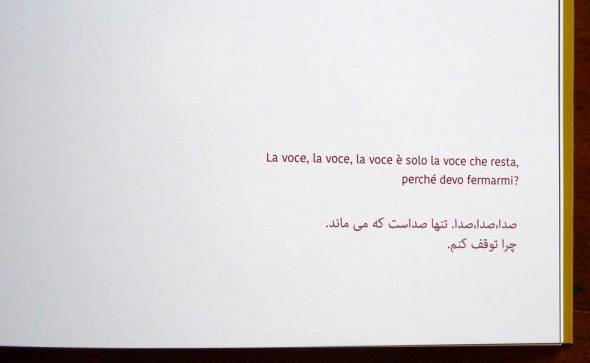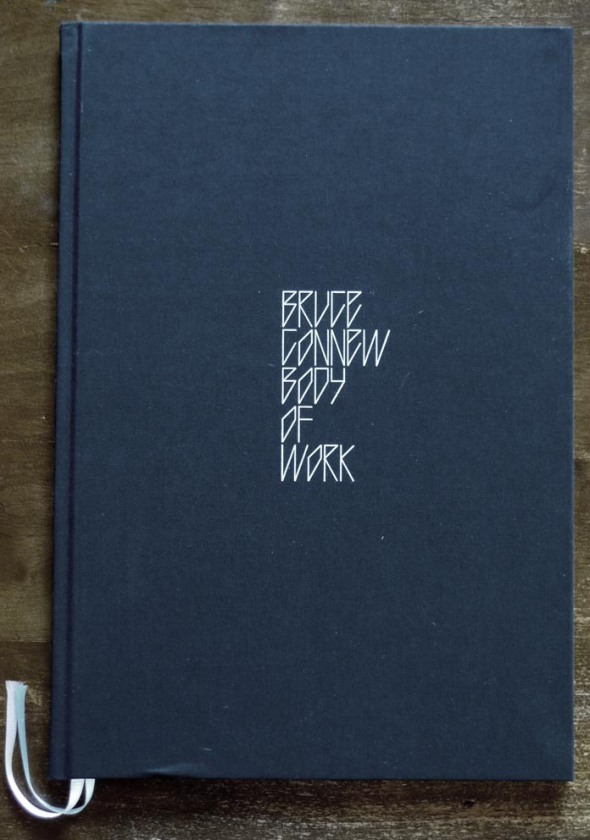The never ending story of Sheherazade : Iran seen by two photographers
Posted: July 24, 2016 Filed under: Photobooks, Photography | Tags: Behbahani, Davide Palmisano, Farrokhzad, Iran, Italian phootgraphy, Manuela Marchetti, Persia, photobooks, Poetry, Sheherazade, Sokuk, Timeless Persia Leave a commentIran (former Persia) is a fascinating country, known to be the cradle of civilization; the country went through the twentieth century by first, having one of the most dynamic intellectual society, and then, since 1979, a closed and authoritarian religious society. Very slowly, the country opens again, offering us the opportunity to rediscover it.

Davide Palmisano and Manuela Marchetti offer us a song for two voices. Two photographers who travel Iran in 2015 and who deliver their vision of the country. Each of their books is written in the thickness of time. Together, they revisit the history of Persia.
Davide’s book is entitled « Timeless Persia » and, following his traces, we discover Iran as a palimpsest. He looks at the successive layers that have shaped the country. He stops on materials, on networks that accumulate and become entangled. We discover a country on the move, a country that never stops. It is built and rebuilt continuously, keeping the scars of the past. It rubs constantly to the past and it becomes difficult to date the photographs, archival images come mix with contemporary views. We keep this feeling that everything has always been where it should be: a kind of cultural resilience, a resilience of shapes.
One begins to dream of Scheherazade, each page is a snippet of a tale that holds us in suspense until the next page. Large black-and-white photos on double pages take us across the country, they chant the rhythm. This is a slow time between the faster sequences, the time of the passing with the feeling of these landscapes already known. The book is completed with texts that remain ununderstandable to me, as written in Italian and Farsi, but that is part of the « journey », these unknown sounds, like the multitude of signs that are piling up on some images which we pictorially read. We are captives and when the book ends, we have to start it again… and again.
Manuela’s book is entitled « Sokut » meaning « silence », in Farsi. As « Timeless Persia » was noisy, or to better say sonorous with a design that varied rhythms as a traditional song, as « Sokut » is silent like these harmonics that we do not hear but create depth in melodies. Time seems to have stopped and we discover a long poem. We stop on details, private moments and places that each image slowly inscribed in us. Frames are tightened, we are looking our way in a quiet place. The persons are faceless, the only faces we see are only representations (photos, paintings, statues…). We wander anonymously in the town, a quiet town, soothed. No matter that we no longer find our way, we loose ourselves with relish, looking for freshness or a moment in the shade, to settle in calm.
Texts come punctuate the book, alternating with images. These are poems of two of the greatest Iranian poetess: Simin Behbahani and Forugh Farrokhzad. Two women who have their whole lives claimed women’s voices. And the book ends with an excerpt from « It is only sound that remains », the voice of women finally out of the silence, full of sorrows but also of hope. In that way, this book is decidedly feminist, it is a tribute to all those women who have built the country in silence.


I’ve never really asked myself about the difference between male or female representation through the use of photography, but it is so clearly evident here with these two books. Maybe it is partially due to the fact that we are focusing on a society that is cleaved between men and women. But anyway, the combination of the two works is very interesting, Manuela and Davide evolve within a country, they can work side by side but look at things differently, tell words (or silence) differently. Although claimed as two separate and independent works, it remains true that there is a real added value to associate them to better succumb to the charm of Sheherazade and be guided in this tale of the « Thousand and One Nights ».
Timeless Persia, by Davide Palmisano. Softcover self published in 2016, 16,5 x 24 cm, 76 photos , 96 pages. Limited print run : 150 copies signed and numbered.
More info : http://dpalmisano.jimdo.com/books/
And : http://josefchladek.com/book/davide_palmisano_-_timeless_persia
Sokut, by Manuela Marchetti. Softcover self published in 2016, 21,5 x 15 cm, 35 photos, 96 pages. Limited print run : 150 copies signed and numbered.
More info : http://manuelamarchetti.jimdo.com/books/
And : http://josefchladek.com/book/manuela_marchetti_-_sokut
Body of work, by Bruce Connew
Posted: July 11, 2016 Filed under: Photobooks, Photography | Tags: Bruce Connew, Horse, Horse breeding, Mare, New Zealand, photobooks, Photography, selfpublished Leave a comment
How to start talking about this book? Perhaps noting that this book is one of the weirdest that I have seen recently. In 2014, when Bruce went round the publishers, the answer was quite unanimous: this book cannot be published… too strong. What a strange answer! It is true that many publishers have become very cautious and unwilling to take any risks, despite the fact that it is their role. Some even ask photographers to participate in the production of their book through crowdfunding campaigns. We are far from a Robert Delpire who, against all American reluctance and with a resolutely avant garde editorial approach, published “Les Américains” by Robert Frank and “New York” by William Klein.
Let’s be back to our subject. No clues about the suject when we discover the book. A black linen cover with just the photographer’s name : Bruce Connew, followed by the title of the book : Body of work. We open the book on a new black page before arriving to the title page, inserted on a special light blue paper : this blue used by parents to repaint the room of the boy to come. The last page of the book, which includes a text from the author and the colophon is … pink, the same pink with which parents repaint the bedroom of the girl to come. Two ribbons to mark pages are of these same colors. I always like, when I discover a new book, to look at the title page, and then go through the colophon before interesting myself in the content itself.
We then return to the beginning of the book and, between two white pages, we find inserted a small photograph of wildflowers, like a torn page of a notebook or a diary like those used to note the daily tasks. And the first image appears on the following page. A large dark image on which we recognize the hoof and lower part of the leg of a horse and his erect penis. A slow rythm will settle through the pages, double pages alternating with blank ones, all in a certain dim light. Muscles tense, we are witnessing a beautiful ballet between the stallion and the mare. The book is violent and intense. He tells us about the reproductive process within the equine world. But beyond this, it is also the story of a fascination Bruce Connew had since a former photograph he saw a long time ago already. His first approach was still uncertain and one can imagine the surprise of the owner of the barn when Bruce told him about his plan! This is the way a new work emerges, there is a kind of intuition of the subject that is often difficult to formulate; this is classic, the subject will be built slowly. In the case of Bruce Connew, the idea of documenting the world of horse-breeding was full of presupposition, but after spending months scrutinizing the horse breeding process, he became attentive to every detail! And from that patience was born this superb book. You could almost miss an important aspect of the work, focused on the formalist photographs, shapes and light that glides on the fur. But taking the time to look at pictures, back and forward, you may discover all the sensitivity of this work that appears in the amazing gazes. Everything happens in the dark, you have to be constantly attentive to detect these tiny details. If the eyes are the mirror of the soul, Bruce asserts: Through mournful eyes, they would make known an understanding of their peculiar predicament.
The book is beautifully printed, which is necessary to render this special atmosphere of the barn in a dim light, we come to smell the musky smell of horses, the sweat, the semen. What was formerly related to economic issues simply becomes sensitive. For those who followed horse races and bets at bookmakers, you know the importance of filiation in the racehorses world, the temptation of a genetic optimization for the “perfect” animal with “absolute” qualities. But all that is set aside here and Bruce well says : I wonder now whether this was my construction, and sprang from somewhere other than what I witnessed in the breeding barn. His work is convincing because, at the end of his book, we ask ourselves the same question! I will probably never look at a mare the way I did before this book. And to be honest, it has taken me some time to really enter this book, but it is definitely worth a review.
And by the way, the 38 images of the series (size 800 x 532mm, frame size 830 x 562 mm) are available for international exhibitions, and I would love to see them, because, even if the book is beautiful, I would so much appreciate to see the large prints.
Hardcover book self published in 2015 in New Zealand ; 24 x 35 cm, black linen cover, 68 pages with 38 black and white photos. Signed and numbered in an edition of 600 copies.
More info : http://www.bruceconnew.com/books/#12-body-of-work
And : http://www.josefchladek.com/book/bruce_connew_-_body_of_work










































